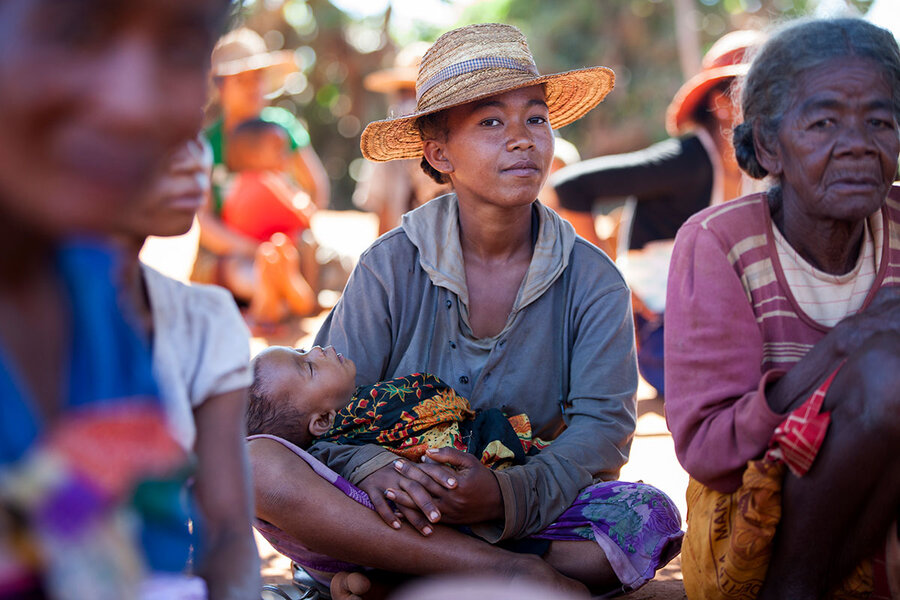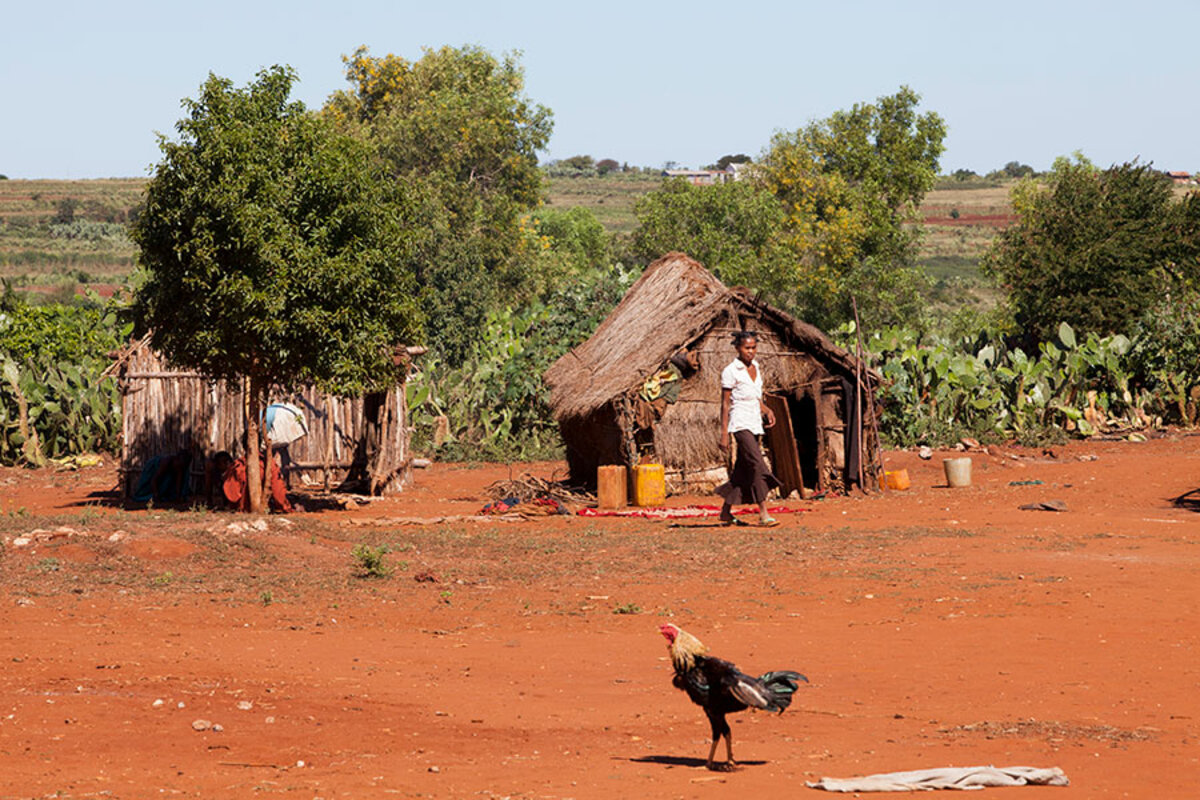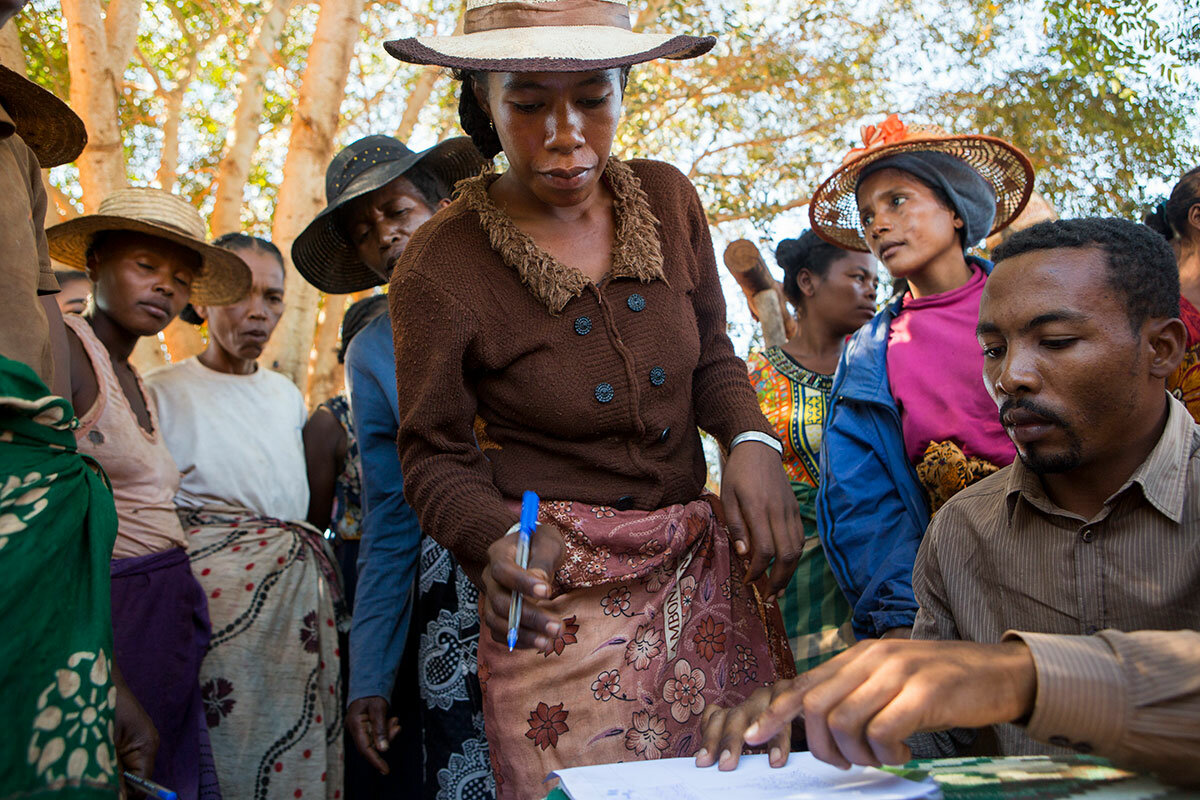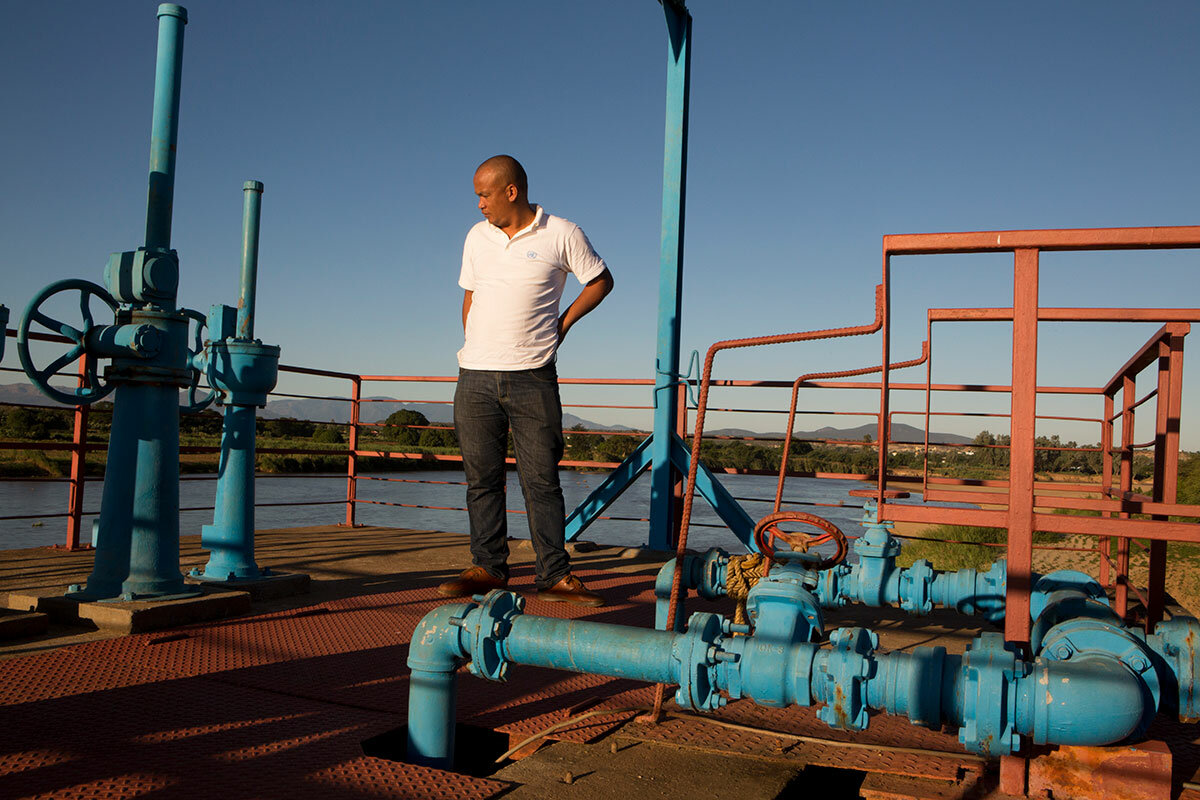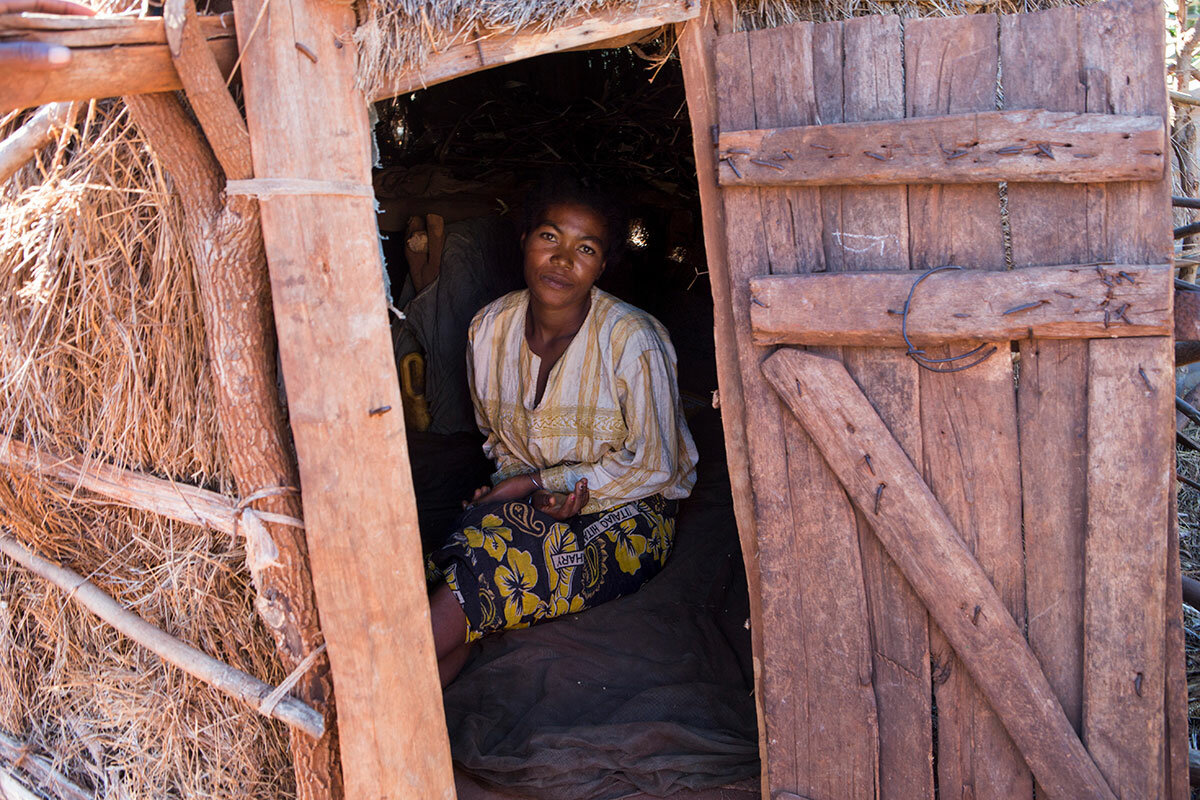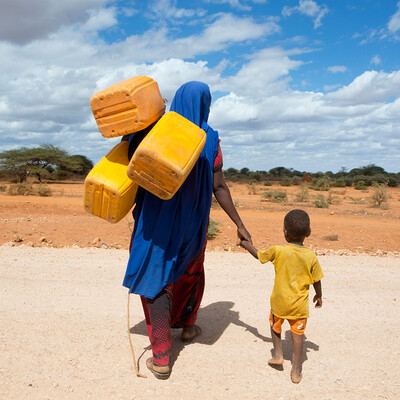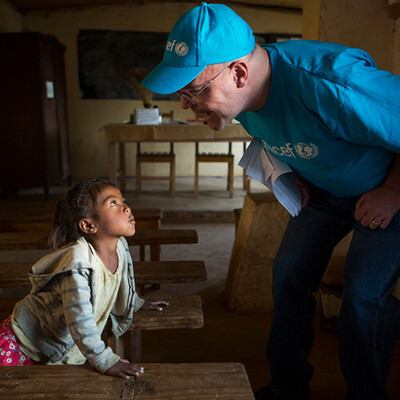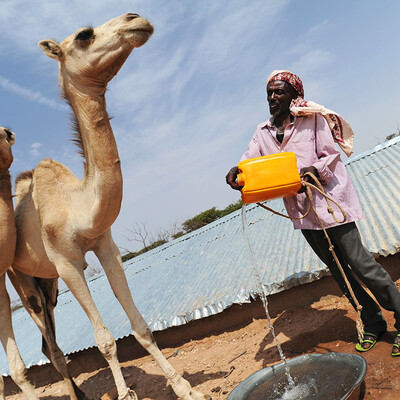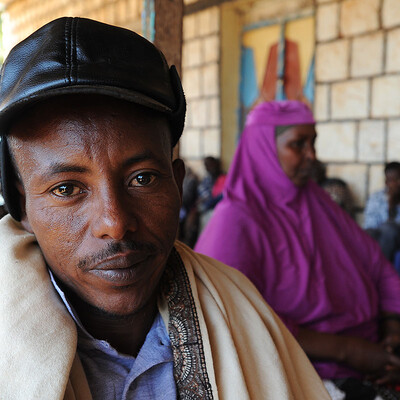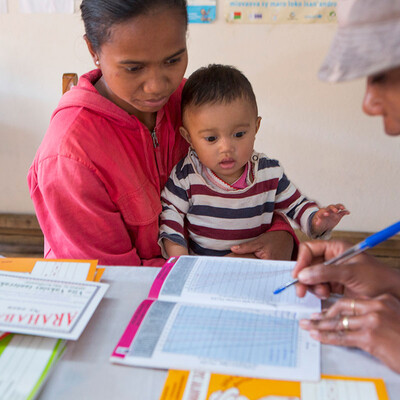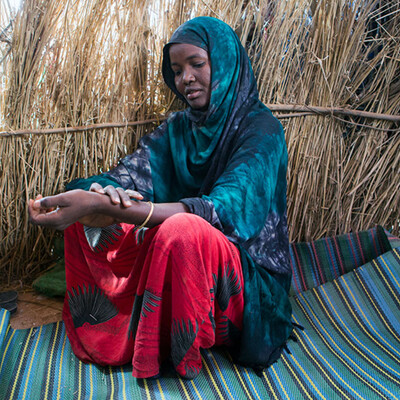Madagascar skirted famine – barely. Now, it's boosting resilience before drought returns.
| Ambovombe, Madagascar
Battered by drought and civil wars, more than 20 million people from Yemen to Tanzania are at risk of starvation in what aid workers call the largest humanitarian crisis since World War II. But over the past two decades, nations that once produced searing images of famine's toll have moved to thwart it by strengthening community resilience. Our reporters traveled to Madagascar, Ethiopia, and Somaliland to investigate the daunting challenges as well as the long-term efforts that are saving lives.
First, they sold their goats. Goats are precious, but not as sacred as hump-back zebu cattle. Then they sold their cattle, too. And finally they sold their kitchen pots. There was nothing to cook, anyway, besides leaves and bitter cactus fruit.
For farmers in Madagascar’s drought-stricken south, this menacing months-long countdown to impending famine last year was measured week-to-week at village markets, where they desperately tried to raise enough money to stay alive and buy seed for one more harvest.
And then the rains would not come, their cassava and sweet potato plants would wither, and the hunger in their bellies forced them back to the markets to sell whatever they had left.
“That’s the true indicator that the south is in real difficulty: when people sell their livestock and their kitchen utensils at rock-bottom prices,” says Dr. Audin Rabemiandriso, who for the past six years has run the health clinic in this dusty, ramshackle town, whose dirt streets are lined with women squatting by small piles of root vegetables for sale. “And last year was the worst that I’ve experienced.”
In international aid jargon, that meant that more than half a million people were enduring crisis-level “Phase 3” food insecurity. Another 330,000 were in even worse shape, suffering emergency-level “Phase 4” food shortages. “Phase 5” is famine.
“People were on the edge,” recalls Elke Wisch, head of the UNICEF office in the Madagascan capital of Antananarivo.
But they did not tip over. Catastrophe was averted. And now, with help from international aid donors and a little rain from the heavens, local farmers and their families are beginning to pick themselves up, rebuild their lives, and prepare to cope better with the next drought.
For a next drought there will surely be. The land in southern Madagascar is fertile: just three or four rains ensure a harvest. But farmers cannot count even on that. Droughts, once cyclical, are now semi-permanent. And last year the situation was worsened by El Niño, the weather pattern that made the rains even more irregular and insufficient.
That threw the farmers’ plight into sharper focus, reminding the world of the longer-term effects of climate change: Year by year, the lean season – from the day that villagers run out of food until the day they reap their next harvest – stretches a few weeks longer.
That is a challenge for peasant farmers across eastern Africa. But Madagascar’s success avoiding famine last year, and the lessons that it learned from its brush with disaster, point to ways in which crises might be averted elsewhere if villagers can strengthen their resilience in the face of danger.
If persistent drought is the new normal, local people are going to have to adapt to it, so as not to risk starvation again. Already, they are making changes to ward off the threat of famine, from more frequent clinic visits to keep an eye on kids’ health; to new sources of water and crops; to finding ways to earn a little extra cash, or raise a little extra protein – an egg-laying chicken, perhaps, that could mean the difference between life and death when the next climatic disaster strikes.
Spotting the crisis
If famine was averted this time round, it was partly because scattered rain has fallen on the parched fields in recent months – just enough for some farmers to gather small harvests of corn or cassava. But it was also largely because international aid agencies had long been present in Madagascar, one of the poorest and least developed countries in the world. They were in a position to spot the food crisis as it crept up, slowly and silently, and well-placed to quickly provide survival rations and other emergency aid.
But even so, Madagascar’s pitiful infrastructure makes food aid delivery easier said than done. Roads in the south are in catastrophically bad shape, suited better to travelers on foot or on bicycles than to the rare motor vehicles that brave them. Any tarmac that was once laid through the open farm and scrubland has long since crumbled and washed away, leaving red clay highways cloven by mini-canyons that deepen with any rainfall. They are almost impossible for tractor-trailers carrying grain to navigate.
The World Food Programme has been working in the area for 30 years, meaning it could scale up quickly to feed a million people when the situation went critical. But new tactics gave added impact to its aid, circumventing Madagascar’s geographical challenges. Last year, in regions where there was still food to be had, the WFP gave an emergency $20 per month to families to buy what they could find.
“You don’t need trucks to distribute cash, just mobile phone networks,” Theodore Mbainaissem, the WFP emergency coordinator in Ambovombe, says of the mobile money transfers. “It’s a lot more practical.”
WFP also handed out high-nutrition food supplements to moderately malnourished children, so fewer of them fell into the severe acute malnutrition that could kill them.
UNICEF, the United Nation’s children’s agency, saw that food was growing alarmingly scarce as early as 2015, when government doctors and nutritionists, carrying out routine health checks with UNICEF support, began reporting skyrocketing levels of child malnutrition.
Quickly, the agency expanded its nutrition programs to all 193 town and village health centers in the south, screening every child under 5 and making sure the worst-malnourished were given high-nutrition, peanut-based food supplements. “Our first priority was to prevent loss of life,” says José Más Campos, UNICEF’s emergency coordinator for Madagascar. By and large, they succeeded; few children died.
Generally, aid officials say, international donors reacted quickly and generously when they realized how grave the threat of famine had grown. But often they insisted their money be spent only on emergency cases – a familiar conundrum for NGOs.
That meant, for example, that UNICEF could not use some donors’ cash to treat moderately malnourished children, says UNICEF's Ms. Wisch. “We had to wait until the situation got absolutely critical,” she recalls, when children were suffering from severe acute malnutrition and their lives were at risk.
“We got a good response from emergency aid donors,” says Wisch. “But even if we got people over the hump this time we’ll have another drought in a year or two. What we need is a sustained resilience program … to stop people drifting into the next humanitarian emergency-threshold situation.”
Behind hunger, thirst
That’s the thinking behind a package of complementary measures that aid workers are now taking in southern Madagascar to build “resilience.” That is the new buzzword in humanitarian circles: It is seen as a key to ensuring that farmers have something to hold on to when drought strikes again, rather than finding themselves caught in an endless cycle in and out of disaster.
“This crisis is about food, of course, but it is mainly about water,” says Mr. Más Campos. “We are not getting enough either from the sky or from the ground.” Clean water, he argues, offers the path from emergency survival to long-term development.
UNICEF has been paying for trucks to deliver water to out-of-the-way villages, which spares residents from having to drink unsanitary surface water. But it is not a lasting solution.
Much more promising is the kind of system the government has set up with UN assistance in the village of Sihanamaro, a collection of simple wooden huts scattered among savannah shade trees, whose farmers scratch a living from land they have cleared of thorn trees.
Here, a solar pump carries clean water from a sealed well up to a water tower, from which it flows to seven community taps around the village, each set in a cement trough and protected by a picket fence.
“This has changed our lives,” says Vaha Saajinuru, a mother of eight who until recently had to walk four or five times a day to get water: down the dirt road out of town, and then across thorny grassland to a muddy pit more than a mile from her home.
The children who drank that water easily fell prey to disease that only made their malnutrition worse. “We knew it wasn’t good for our health but we had no choice,” says Ms. Saajinuru. “Now my kids have no more stomach problems, and there are three taps near my home where they can go to get water.”
A $10 difference
Water is still a problem in Ankilimanara, the tiny village where Patricia Soavenira lives in a low-roofed, cramped thatch hut with her husband and four children, sleeping on a mat on the bare earth. But at least she has something to give her family to eat.
Ms. Soavenira is one of 55,000 mothers whose malnourished children make them eligible for a $10 monthly cash handout from a local nongovernmental organization. She spends the money on weekly trips to a market an hour’s walk away, where she buys rice, corn, beans, and anything else she can afford.
“Without the cash, we’d just be eating cassava leaves and wild cactus like last year,” she says, watching a pot on a smoldering fire as she nurses her baby. “I was very, very thin then; very, very weak. And I was very frightened for my children.”
Soavenira had sold all her kitchen utensils except one pot and a spoon. Now she has bought five more spoons and another saucepan. They are only the bare essentials, but she would rather spend her money on food, she says. “We are still hungry.”
The monthly cash handouts are keeping people in Anklimanara alive, but the NGO running the program, the Foundation for Development Intervention, has an innovative, broader vision. Over the next few months it will hand out $60 grants (a small fortune in a country where few earn more than $2 per day) in “getting back on your feet” money.
Recipients will be expected to invest it in some sort of productive project – buying a goat, or planting pigeon peas that need little watering and yield crops repeatedly over three years, for example. Soavenira plans to buy some chickens, she says.
“They could save my life,” she says flatly. “We can eat their eggs, or if one of my kids falls sick I could sell them to get the money for medicine. It means security.”
Resilience made real
Security is all that sweet potato farmer Prinu Rakutunirina wants, too, as he surveys his field of spindly green shoots under a beating sun. But that doesn’t come easy in these parts.
Maybe it was faith or maybe it was desperation, but he stuck with his experimental variety through two crop failures last year, and now he is glad he did. The new strain of tuber, introduced by agronomists with the UN Food and Agriculture Organization (FAO), is more drought-resistant than most. But it was no match for last year’s drought: Starved of water, the plants withered in the dust in July, and then again in September.
But Mr. Rakutunirina finally brought in a harvest last February. And what a harvest. Yields were double what they used to be, he says, and what’s more, the new sweet potatoes last for nearly a year, whereas the old kind rotted after a few weeks. That means he can decide if and when he wants to sell them. It also means he will be able to carry his family through the dreaded kere, the lean season between harvests when there is normally nothing to eat. This is “resilience” made real.
Rakutunirina was part of a pilot group using the new variety. “We all saw our crops increase and now everyone wants to plant this type,” he says, though it will be a year until the 100,000 farmers now using the improved seeds will have harvested enough to spread the variety throughout the drought-stricken south.
“If there is no rain for three months, it does not matter how many high yield seeds you plant,” points out Jean-Etienne Blanc, an FAO field worker. “You’ll get a poor harvest. But farmers are learning about good-quality seeds and how to use them, and next year they will be seeking them out.”
Rakutunirina is a convert. “Everything depends on the rain, of course,” he says. “But this plant can protect us from the return of hunger.”



